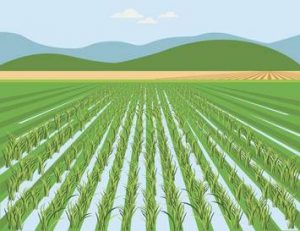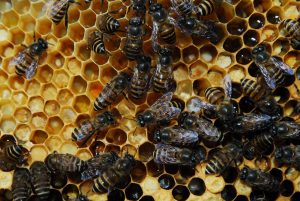Today Current Affairs: 8th November 2022 for UPSC IAS exams, State PSC exams, SSC CGL, State SSC, RRB, Railways, Banking Exam & IBPS, etc
Table of Contents
UN Resident Coordinator For China:

Siddharth Chatterjee, who rose to become the United Nations (UN) Resident Coordinator for China, is currently leading the UN and its 26 agencies in China.
- In 2020, UN Secretary-General Antonio Guterres appointed senior UN official Siddharth Chatterjee of India as the UN Resident Coordinator in China.
- A National Defence Academy (NDA) graduate and former 10 Para special forces officer, Siddharth Chatterjee fought for the Indian Peace Keeping Force (IPKF) in Sri Lanka and battled insurgencies in Nagaland.
UN Resident Coordinator (RC):
- Highest-ranking representative of the UN Development System at the country level.
- RCs lead UN Country Teams and coordinate UN support to countries in implementing the 2030 SDG Agenda.
- The Resident Coordinator is the designated representative of and reports to the UN Secretary-General.
State Of Food And Agriculture Report 2022 : FAO

The recently released FAO’S State of Food and Agriculture report 2022 looked at how agricultural automation in our agri-food systems can contribute to achieving sustainable development goals.
Highlights of the report:
- Agricultural automation plays an important role in making food production more efficient and environmentally friendly.
- However, it can also deepen inequalities if it remains inaccessible to small-scale producers and other marginalised groups.
- Agricultural automation can lead to unemployment in places where rural labour is abundant and wages are low.
- There are wide disparities in the spread of automation between and within countries, with adoption being particularly limited in sub-Saharan Africa.
- For example, Japan had more than 400 tractors per 1,000 hectares of arable land, compared with just 0.4 in Ghana in 2005.
Janjatiya Gaurav Divas:

To commemorate the contribution of the tribal freedom fighters, the Ministry of Education is celebrating the ‘Janjatiya Gaurav Divas’.
- The government had declared 15th November as ‘Janjatiya Gaurav Divas’ dedicated to the memory of brave tribal freedom fighters.
- 15th November is the birth anniversary of Birsa Munda who is revered as Bhagwan by tribal communities across the country.
Birsa Munda:
- Birsa Munda was an iconic freedom fighter, social reformer, and revered tribal leader of the country, who fought bravely against the exploitative system of the British colonial government, and became a legendary figure in his lifetime, often referred to as ‘Bhagwan’.
- He organized and led the tribal movement, giving a call for “Ulgulan” (Revolt, 1899-1900) to the tribals.
- He encouraged tribals to understand their cultural roots and observe unity.
World’s Longest Passenger Train:

The world’s longest passenger train was operationalized in Switzerland during the 175th anniversary of Swiss Railways.
- The passenger train is 1.9 km-long, having 100 coaches.
- It travelled 15.5 miles from the Albula Tunnel in Preda to the Landwasser Viaduct, at the outskirts of Filisur.
- The journey ended at Bergün.
- It travelled via the famous Albula-Bernina route a UNESCO World Heritage Site.
- During the journey, the trained travelled via 22 tunnels and 48 bridges.
Unified District Information System For Education plus (UDISE+) Report:

The Union Education Ministry released the detailed report on Unified District Information System for Education Plus (UDISE+) 2021-22 on school education of India.
Findings of the UDISE Plus 2021-22 Report:
- A total of 94.95 lakh students entered pre-primary classes in 2021-2022, registering a drop of 10% as compared to the previous year when 1.06 crore children enrolled in these classes.
- However, in 2020-2021, there was already a decline of 21% enrolment in pre-primary classes as compared to 1.35 crore the year before as the pandemic and lockdown measures resulted in school closures and classrooms moving online
- Enrolment in primary classes (classes 1 to 5) also saw a drop for the first time—falling from 12.20 lakh in 2020-2021 to 12.18 lakh in 2021-2022.
- However, the total number of students from primary to higher secondary increased by 19 lakhs to 25.57 crores.
- Total number of schools in 2021-22 stood at 14.89 lakhs compared to 15.09 lakhs in 2020-21.
- The decline was mainly due to closure of private and other management schools and grouping/clustering of schools by various states.
- There were also 1.89 lakh fewer teachers as their number reduced from 96.96 lakh in 2020-2021 to 95.07 lakh in 2021-2022.
- Computer facilities were available in 44.75% of schools, while Internet access was available only in 33.9% of schools.
- However, their availability has improved as compared to pre-covid when only 38.5% of schools had computers and 22.3% had Internet facilities.
- Gross Enrolment Ratio (GER) compares the enrolment in a specific level of education to the population of the corresponding age group.
- The GER for the primary section has improved from 101.3% in 2018-2019 to 104.8% in 2021-2022.
- For secondary classes, it has risen to 79.6% in 2021-22, from 76.9% in 2018-19 and for higher secondary level, it has in
- Total number of Scheduled Caste enrolment increased to 4.82 Crore in 2021-22 as compared to 4.78 Crore in 2020-21.
- Total Scheduled Tribe enrolment increased to 2.51 crore in 2021-22 from 2.49 crore in 2020-21.
- Total other backward students also increased to 11.48 crore in 2021-22 from 11.35 crore in 2020-21.
- Total enrollment of Children with Special Needs (CWSN) in 2021-22 stands at 22.67 lakh as compared to 21.91 lakh in 2020-21.
New Species Of Endemic Honeybee:

A new species of endemic honeybee has been discovered in the Western Ghats. The finding has been published in the September issue of Entomon, a peer-reviewed journal brought out by the Association for Advancement of Entomology.
- The new species has been named Apis karinjodian and given the common name Indian black honeybee.
- It is after a gap of more than 200 years that a new species of honeybee has been spotted in the Western Ghats.
- The last honeybee described from India was Apis indica in 1798 by Fabricius.
- Although Fabricius named the Indian bee Apis indica, it was not considered a valid species till now.
- The research team restored the status of Apis indica based on a new measure for species discrimination in honeybees termed ‘Radio-Medial Index (RMI)’.
- While proving the distinct identity of Apis indica, led to the discovery of Apis karinjodian.
- Apis karinjodian has evolved from Apis cerana morphotypes that got acclimatised to the hot and humid environment of the Western Ghats.
- The distribution of Apis karinjodian ranges from the central Western Ghats and Nilgiris to the southern Western Ghats, covering the States of Goa, Karnataka, Kerala and Tamil Nadu.
Seema Darshan Project:

Prime Minister Narendra Modi has urged the citizens to visit Nadabet and other border areas as part of Seema darshan to further tourism.
- It was initiated with the aim to provide an opportunity to the people so that they can visualize the life and work of the Border Security Force (BSF) personnel on our border.
- Nadabet is located in the Rann of Kutch region. It is also known as the ‘Wagah of Gujarat’.
- The access provided to civilians at Nadabet to view the fenced international border with Pakistan at ‘Zero Point’.
- Nadabet played a key role in the 1971 Indo-Pakistan War. It was in this region that the BSF not only stalled the enemy trying to invade from the west, but also captured 15 enemy posts.
- During the war, the BSF had captured 1,038 square km of Pakistan territory in Nagarparkar and Diplo areas. The area was returned to Pakistan after the Shimla Agreement was signed.
- Jaislamer: BSF has set up a unique memorial museum named Seema Darshan to create awareness about the duties of BSF to the general public and the incidents of bravery at Sam sand dunes in Jaislamer.
Falcon Heavy Rocket:

On November 1, Elon Musk-owned SpaceX launched the Falcon Heavy rocket into a geosynchronous Earth orbit from the Launch Complex 39A at the Kennedy Space Center in Florida, U.S.
- This is considered as a National Security Space Launch for the U.S. military.
- This is the fourth launch of the giant rocket system, and the first one in nearly three years since its last launch in 2019.
- SpaceX claims Falcon Heavy to be the most powerful rocket in the world today by a factor of two.
- With a lifting capacity of around 64 metric tonnes into orbit, Falcon Heavy can lift more than twice the payload of the next closest operational vehicle, the Delta IV Heavy.
- Falcon Heavy has 27 Merlin engines which together generate more than five million pounds of thrust at lift-off, equalling around eighteen 747 aircraft at full power.
- The rocket can lift the equivalent of a fully loaded 737 jetliner, complete with passengers, luggage and fuel, to orbit.
- Merlin is a family of rocket engines developed by SpaceX for use on its Falcon 1, Falcon 9 and Falcon Heavy launch vehicles.
- Merlin engines use RP-1 and liquid oxygen as rocket propellants in a gas-generator power cycle.
- These engines were designed for recovery and reuse.
Malaria Vaccine For Children:

In October 2021, the World Health Organization (WHO) for the first time recommended the large-scale use of a malaria vaccine for children living in areas with moderate-to-high malaria transmission.
- The RTS,S/AS01 (Mosquirix) was developed by GlaxoSmithKline.
- Malaria kills nearly 600,000 people every year, the majority of whom are children under the age of five in sub-Saharan Africa.
- Malaria is a disease caused by the Plasmodium parasite.
- The parasite can be spread to humans through the bites of infected mosquitoes.
- There are many different types of plasmodium parasite, but only 5 types cause malaria in humans.
- Plasmodium falciparum – mainly found in Africa, it’s the most common type of malaria parasite and is responsible for most malaria deaths worldwide.
- Plasmodium vivax – mainly found in Asia and South America, this parasite causes milder symptoms than Plasmodium falciparum, but it can stay in the liver for up to 3 years, which can result in relapses.
- Plasmodium ovale – fairly uncommon and usually found in West Africa, it can remain in your liver for several years without producing symptoms.
- Plasmodium malariae – this is quite rare and usually only found in Africa.
- Plasmodium knowlesi – this is very rare and found in parts of Southeast Asia.
- The plasmodium parasite is spread by female Anopheles mosquitoes, which are known as “night-biting” mosquitoes because they most commonly bite between dusk and dawn.
Snow Leopard Population Assessment Of India (SPAI):

The first-ever recording of the snow leopard from the Baltal-Zojila region has renewed the hope for the elusive predator in the higher altitudes of Jammu and Kashmir and Ladakh.
- Snow leopard surveys have often focused in neighbouring areas of Ladakh, Himachal Pradesh and Uttarakhand.
- The survey was expanded to the Baltal-Zojila region of Kashmir
- Camera trapping exercises also raised hopes for other important and rare species such as the Asiatic ibex, brown bear and Kashmir musk deer in the upper reaches of the northernmost part of India.
- Snow Leopard population estimation is part of the Snow Leopard Population Assessment of India (SPAI).
- The Department of Wildlife Protection has been conducting surveys with partner NGOs to understand presence and abundance of snow leopards under the SPAI project funded by the Ministry of Environment Forests and Climate Change.
- The Snow Leopard Population Assessment of India (SPAI) has been concluded so far in Himachal Pradesh and Uttarakhand.
- The estimated population of the great cat is 50 and 100 in these two States respectively.
Snow Leopard Population Assessment in India (SPAI):
- It was launched on International Snow Leopard Day on 23rdOctober 2019.
- It has evolved from international effort to develop a global protocol for PAWS under the aegis of GSELP.
- Objective – To help the snow leopard double its population.
- Under SPAI, a two-step process is undertaken to estimate the snow leopard population.
- First step– An occupation-based assessment of snow leopard distribution, which involves identifying the area where the study will be conducted based on conducting preliminary surveys and using interview or sign-based methods.
- Second step– Population sampling for regional density estimation by carrying out a thorough review of already sampled areas.
- Online tools including a data-sharing portal, training app for identifying individual leopards through photographs and threat mapping tool would be utilized.
Total Lunar Eclipse:

A total lunar eclipse will occur on 8 November, 2022. The eclipse is visible from all places of India at the time of Moonrise.
- An eclipse of the Moon (or lunar eclipse) can only occur at Full Moon when Earth is located directly between the Sun and the Moon and only if the Moon passes through some portion of Earth’s shadow.
- That shadow is composed of two cone-shaped components –
- The outer or penumbral shadow is a zone where the Earth blocks part but not all of the Sun’s rays from reaching the Moon.
- The inner or umbral shadow is a region where the Earth blocks all direct sunlight from reaching the Moon.
- Astronomers recognize three basic types of lunar eclipses –
- Penumbral Lunar Eclipse:The Moon passes through Earth’s penumbral shadow. These events are of only academic interest because they are subtle and hard to observe.
- Partial Lunar Eclipse:A portion of the Moon passes through Earth’s umbral shadow. These events are easy to see, even with the unaided eye.
- Total Lunar Eclipse:The entire Moon passes through Earth’s umbral shadow. These events are quite striking due to the Moon’s vibrant red colour during the total phase (totality).




